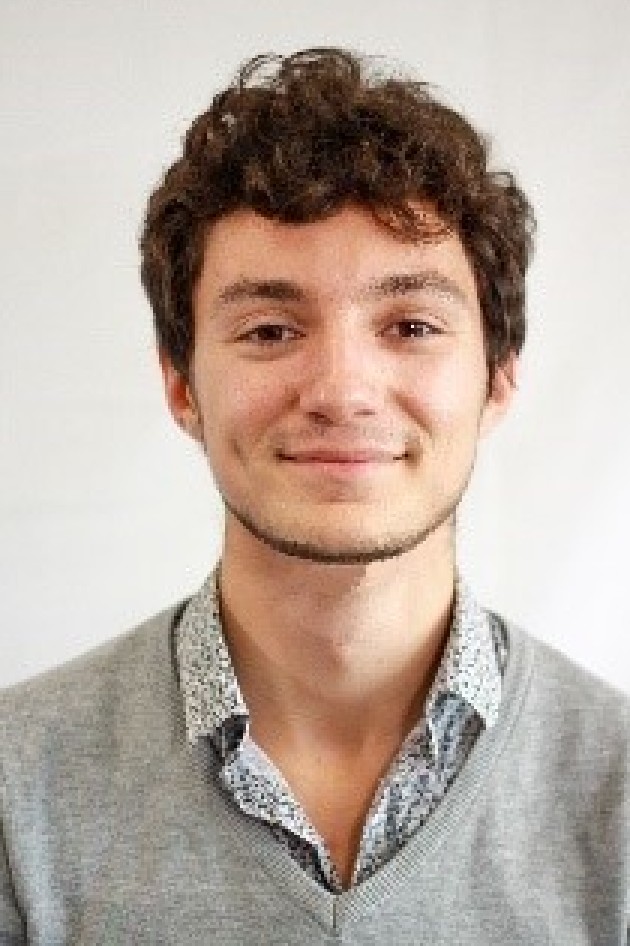 Structural Biomechanics Section
Structural Biomechanics Section
Supervised by Dr. Luca Modenese, Dr. Andrew Phillips, Prof. Dario Farina
Prior to starting his PhD, Arnault Caillet completed a Bachelor of General Engineering at École Centrale de Lyon, an MSc General Engineering at École Centrale de Lyon and an MSc General Structural Engineering at Imperial College London.
Arnault was awarded with a Skempton Scholarship to undertake his studies.
Why did you decide to do a PhD in the Department of Civil and Environmental Engineering?
After my MSc in General Engineering in France, I followed the MSc General Structural Engineering in the Department of Civil and Environmental Engineering as a step towards specialization in that field. While I was interested in the civil engineering-related topics of the MSc, I had the chance to do my MSc dissertation with Luca Modenese and Andrew Phillips on a biomechanical topic. I really enjoyed this opportunity to work in the Structural Biomechanics group where I was able to merge structures-related topics with the field of bioengineering that was new to me. I very much liked working on a transdisciplinary topic in which I could apply the general engineering knowledge I had covered during my French studies. As our collaboration went very well, this dissertation led to an internship eventually followed by the start of my PhD with my supervisors in this Department.
Tell us about your PhD research
My PhD focuses on the computational modelling of the contraction events of skeletal muscles in the living body. Most of our daily and vital activities rely on the activity of skeletal muscles that provide pulling forces to the skeleton enabling limb motion. The mechanisms underlying muscle force production are however not fully understood as the muscle dynamics and quantities (individual muscle force for example) are challenging to measure in the living body. To replicate, investigate, understand, and predict the mechanisms underlying these muscle dynamics for enhanced knowledge, clinical or sports purposes among others, muscle models have emerged in the past two centuries. While these models are able achieve accurate predictions of muscle forces in the case of maximal contractions, the accuracy of the results currently remain poor in the case of sub-maximal contractions.
Levels of muscle contractions vary with the amount of excitatory input (electrical signals sent along neurons) the spinal cord provides to the muscle. The main aim of my PhD is to improve the state-of-the-art in modelling the time-course of this excitatory input from the spinal cord to the muscle machinery. This will improve the model accuracy while enhancing the physiological basis of the current muscle modelling approaches.
What impact do you hope you research will have/what do you hope your research will lead on to?
My PhD should lead to the release of an advanced model of skeletal muscle dynamics that proposes both a better integration of the neural excitation from the spinal cord and a window into the underlying contractile mechanisms. This model could be further used to predict more accurate muscular quantities, but also to investigate detrimental age- or disease-related effects on the neural excitatory signal and how if affects the generation of muscle forces in the living body. Other applications like sports, clinical applications, prosthetics, or robotics could be considered.
Does your research involve working with collaborators outside of the Department? If so who and why?
The production of muscle forces relies on mechanical mechanisms calling for a structural-mechanical engineering background realised in the Department, but also on electrical and chemical dynamics, involving a spinal cord-muscle neuronal interface. To properly treat this second topic, I have the chance of working under the supervision of Dario Farina, Professor in Neurorehabilitation Engineering in the Bioengineering Department.
What is a typical week like for you?
Doing a PhD provides a lot more flexibility in self time-management than a job in industry would permit. I am taking advantage of this to target fewer working sessions of maximal efficiency rather than aiming for many less productive working hours. This has proved to be beneficial while working remotely due to the complex situation presented across Europe by the COVID-19 pandemic. My week is usually composed of 9 half-days of 3-5 hours of work, including 2 to 4 meetings with my supervisors or with my research group to direct, share and discuss advances in my/our research work. Depending on the tasks at hand, my week is usually divided between reading pertinent articles to my research, developing, and implementing my muscle-tendon model and animating tutorial sessions with graduate students. When the public health situation improves, I will additionally undertake experiments in the biomechanical laboratory.
How have your skills developed, both professional and personal?
I have the chance to have supervisors that work towards developing my skills in a large variety of topics. I am developing during this PhD new knowledge on the biophysics of muscular contraction and am improving my skills in Python programming and structural engineering. My English scientific vocabulary strengthens, and I am developing skills in paper writing and oral presentations. As a PhD is a project spread over several years, I am also getting better at time management at all time scales.
What do you enjoy most about being a PhD in the Department?
I very much like being in a multidisciplinary department so that I have the opportunity to discover a large variety of research topics that are not all bioengineering-focused. The Department is additionally providing the opportunity of undertaking Graduate Teaching Assistant work on structural engineering related topics, which I like covering again during the tutorial sessions.